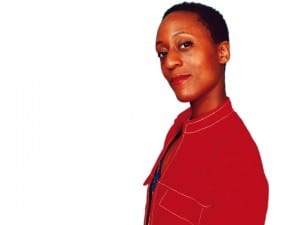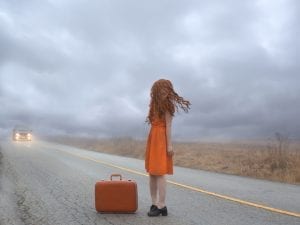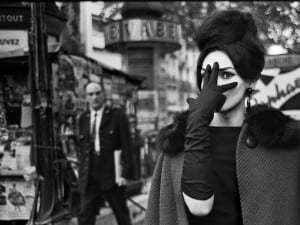Through its implicit and explicit nature, fashion photography is reaching new heights. A new wave of photographers exhibits the ultimate 21st century narrative.
Fashion photography invites us into a bold new world. The boundaries are expanding, blurring into the realms of documentary, fine art, social commentary, celebrity and fantasy. There are progressively fewer rules and limits. It’s a lively visual exploration of the very culture that it captures. The resultant photographs are striking and allure the viewer, asking them to indulge in the beauty and vitality of what is presented. Fashion photographers push their unique vision within a constant practice of adaptation, creating enduring images that transcend fashion illustration.
Opening this February at Liberty and selected by Andree Cooke of Spring Projects, Six Creative and Mark Loy, Managing Director of Spring Studios, OH! YOU PRETTY THINGS is a fascinating exhibition that showcases five of Britain’s up and coming fashion photographers. Billed, as the “new generation of British fashion photographers”, the show invites a discourse around the ever-changing boundaries of fashion, photography, art and design. The five young photographers in this show (Josh Olins, Dan Jackson, Angelo Pennetta, Jacob Sutton and Alice Hawkins) engage with the diversity of the genre and demonstrate how this creative form is constantly developing. They shoot for many of the leading contemporary fashion magazines such as Vogue, LOVE, POP, Another, Dazed, i-D, Harper’s Bazaar, Arena Homme +, and Numero, and are amongst the fastest rising talents in the industry.
Although OH! YOU PRETTY THINGS is a group show, each photographer’s work shows their individual approach to their subjects, highlighting the collaboration that develops between the photographer and sitter. Fashion photography creates a polemic; the visual discourse that emerges is complex and rooted in consumerism, but these images are more than just pretty pictures. They are arresting fictional narratives, Cooke explains: “Like all creative art forms, photographers’ work responds to, and represents an aspect of cultural history, social discourse and the cultural climate of the given moment. What’s important to consider is that all the work in the show is editorial work, that is, it has been commissioned by someone else (generally a magazine); and that the photographers are responding to a brief. Within these restrictions, however, they have managed to create innovative work that plays with the genres of portraiture, documentation and social commentary to keep the practice of fashion photography moving forward.”
With photographers like Rankin and Mario Testino setting the benchmark for the genre, it’s important to remember that the world of fashion photography is one in which very few new names often appear; and it tends to be an industry where photographers shoot for a long time before being able to establish their own careers. With this in mind, Spring Projects provides a much-needed platform for experimental work across the fields of fine art, design and fashion. Contemporary artists and designers whose reference is popular culture in its broadest sense have energised a new dialogue between the worlds of art, fashion and design, one defined less by subject than by attitude. Cooke is adamant: “It’s predominately a field in which rising stars are few and far between. The show aims to give a platform to five photographers who are the next generation of those we believe will be the big names of the future in this field. Each approaches how they express themselves within this genre in a very different way; the exhibition was selected to enhance the differences rather than make comparisons between them.”
With the digitisation of our culture, the altercation of value systems, and the predominance of consumerism, fashion photography is communicating not only what’s explicit, but also more importantly what’s implicit. There is a perceived objectivity, as in “seeing is believing”, and through this understanding photography becomes a powerful medium for the masses, reinforcing the idea that buying this will make me better/prettier/thinner/loved/popular/successful. Fashion photography, in some respects, is incredibly superficial, but the creative process in which these images are created is similar to that of any other art form. Ultimately, it boils down to context, in the magazines, these images are selling, but in the gallery an entirely new meaning emerges, and this work demands your attention, and your appreciation. These photographers are inverting this idea, creating interplay between commodity and the visual landscape; paradoxically representing the real and the artificial at the same time. “Historically, fashion advertising has shouted until you listen, from one way communication devices such as billboards and magazines. Future advertising and therefore the future of fashion photography is to be part of a new compelling mix of multimedia, and digital strategy. Photographers must understand the digital channels by fusing their art with the latest software science. Some photographers, however, are reacting against this recent ‘digital age’; their images thus look less futuristic and digitalized than a few years ago.”
One of the five photographers, Josh Olins (b. 1980), directly references Pop culture. Recalling the 1980s, his aesthetic, in particular, displays influences from the work of Steven Meisel and Richard Avedon from that decade. His images tantalise us with memories of youth, beauty, sexuality and desire, downplaying the commodities they are displaying and highlighting patternation, sequencing and seduction. There is also an element of current attitudes and trends; models often appear apathetic and disengaged. Olins has turned the commodity on its head, congruently displaying desire and isolation simultaneously, a feeling common in 21st century Western society.
Dan Jackson’s (b. 1976) images are a wonderful example of the incredible diversity of photography. His works reference still life paintings and old Dutch Master portraiture in their lighting and styling. There is a starkness and austerity, which feels both historic in nature but innovative in approach. The contemporary is visually referenced to avoid stylistic historicising: the image of Boris, for example, shows a nude male whose haircut and body symbolise a 21st century man, as opposed to a traditional Michelangelo or Da Vinci physique. His photographs are not “selling” any product, and most of his subjects appear nude, although some are clothed displaying the brand, Acnes’ clothes, who commissioned these images. Cooke explains: “Jackson’s pitch for the company is perfect; clear cut, clean living, clear thinking and honest, stripped back to the basics, to functionality and beauty at it’s rawest – that’s what his images seem to say – and convey for the brand they are displaying. They reflect the exciting juxtapositions of old and new, historic and futuristic, a common theme in today’s society.”
Angelo Pennetta’s (b. 1978) images have a slightly different approach and often show celebrities. In the world of celebrity culture and the “next big thing”, Pennetta’s talent lies in making them appear both accessible and personal, drawing the viewer into their world, but first and foremost capturing the viewer’s attention and secondly identifying the celebrity. “His close up, tightly cropped shots highlight a feeling of personal engagement with each subject: Dree lying in flowers as if we (the photographer) are leaning over gazing at her from a close proximity, or the Hefner brothers where their matching pink dogs attract our attention first. His images in this show reflect a culture, which focuses on celebrity and glamour.”
Jacob Sutton’s (b. 1979) images are perfectly styled and carefully constructed. Capturing precise moments in time, Sutton’s works record the splendour of movement – an exploding drum of milk or a perfectly balanced composition. His works investigate the material metamorphosis of an object through the process of human intervention. Fast photographic exposures capture the structure within these explosive moments as simple materials abandon their static form to become something sublime. The subjects within the works are used to provoke a single action, which then in a domino-like effect create a chain reaction of unfolding events. His work has been compared to William Eggleston in its desire to deconstruct time and actions, although Sutton’s take is more conceptual in approach; more engaged in ideas of beauty and his own particular aesthetic.
Alice Hawkins’ (b. 1979) photographs investigate notions of glamour, life-style and aspiration, while they provide a social commentary on how we live today. From the Miss East Anglia competitors photographed in full regalia in their bedrooms, to page three pin-ups, and sedate society women from Russia and India, her photographs convey her ability to show real people in front of the camera. Alongside capturing the exotic lifestyles of others and giving us a taste of worlds we may find hard to enter, she also produces images in which she dons the role of the model, making herself the subject of her portraits, like that of Cindy Sherman. The artist never photographs models, preferring to only shoot “people who enjoy being photographed”, and whose pleasure in dressing up is palpable to the viewer. The sitters express their singularity of character, which extends to every detail of their personae from sartorial tastes to expression and posture. Her characters can possess such an overwhelming individuality that it can obscure the fact we might read them as emblematic of wider social processes. Hawkins raises questions of uniformity, identity and image perception, often making friends with her subjects before perfectly imitating and inhabiting their skin for a snatched second. “Do not be mistaken, Alice Hawkins is not being ironic with her peroxide blond hair and acrylic nails – and neither are her subjects. Her clarity of expression through the audacious or arresting, revolve around discovering aspects of what she calls the ‘everyday burlesque’,” says Cooke. Her inflection of this concept differentiates her from previous generations of photographers; her sitters happily combine the theatrical and prosaic, the exaggerated and the normative. There is also a sense in her portraits that Hawkins has juxtaposed real life with fantasy, and consequently her subjects involve us in the interplay of identification with and alienation from them.
OH! YOU PRETTY THINGS provides an escape from the mundane, removing us from the banality of the everyday. Curated with the intention of highlighting each photographer’s individuality and diversity, this show welcomes debate into the evolving world of art, design and photography. OH! YOU PRETTY THINGS opened on 8 February and continued until 14 March 2010, 4th Floor, Exhibition Space, Liberty, Great Marlborough Street, London. All works were available to purchase, starting from £500. www.springprojects.co.uk.
Cherie Federico





